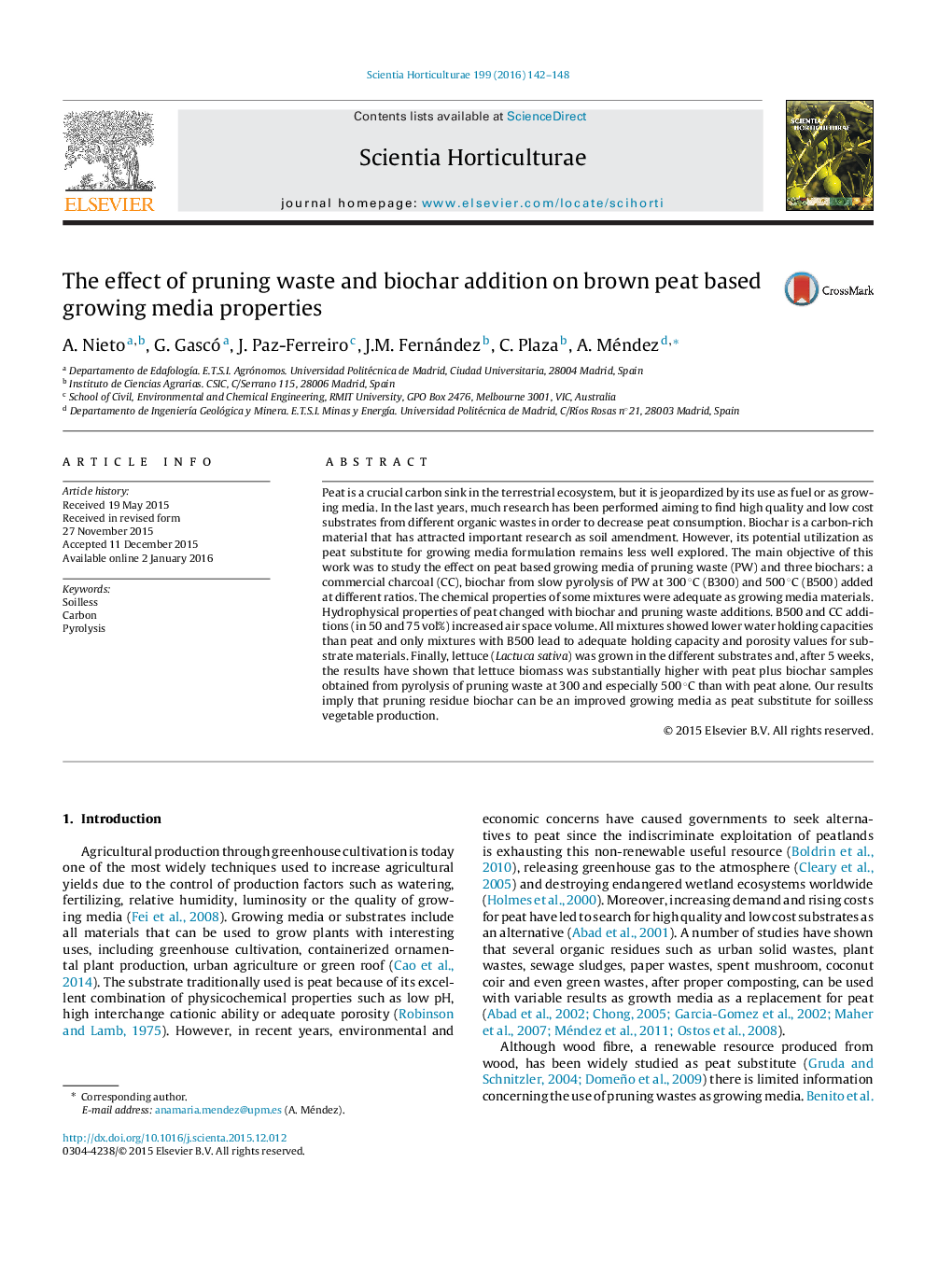| Article ID | Journal | Published Year | Pages | File Type |
|---|---|---|---|---|
| 4566124 | Scientia Horticulturae | 2016 | 7 Pages |
•Pyrolysis at 500 °C reduces pruning waste phytotoxicity.•Biochar addition to brown peat improves some growing media properties.•Lettuce biomass increased with biochar addition to peat.
Peat is a crucial carbon sink in the terrestrial ecosystem, but it is jeopardized by its use as fuel or as growing media. In the last years, much research has been performed aiming to find high quality and low cost substrates from different organic wastes in order to decrease peat consumption. Biochar is a carbon-rich material that has attracted important research as soil amendment. However, its potential utilization as peat substitute for growing media formulation remains less well explored. The main objective of this work was to study the effect on peat based growing media of pruning waste (PW) and three biochars: a commercial charcoal (CC), biochar from slow pyrolysis of PW at 300 °C (B300) and 500 °C (B500) added at different ratios. The chemical properties of some mixtures were adequate as growing media materials. Hydrophysical properties of peat changed with biochar and pruning waste additions. B500 and CC additions (in 50 and 75 vol%) increased air space volume. All mixtures showed lower water holding capacities than peat and only mixtures with B500 lead to adequate holding capacity and porosity values for substrate materials. Finally, lettuce (Lactuca sativa) was grown in the different substrates and, after 5 weeks, the results have shown that lettuce biomass was substantially higher with peat plus biochar samples obtained from pyrolysis of pruning waste at 300 and especially 500 °C than with peat alone. Our results imply that pruning residue biochar can be an improved growing media as peat substitute for soilless vegetable production.
